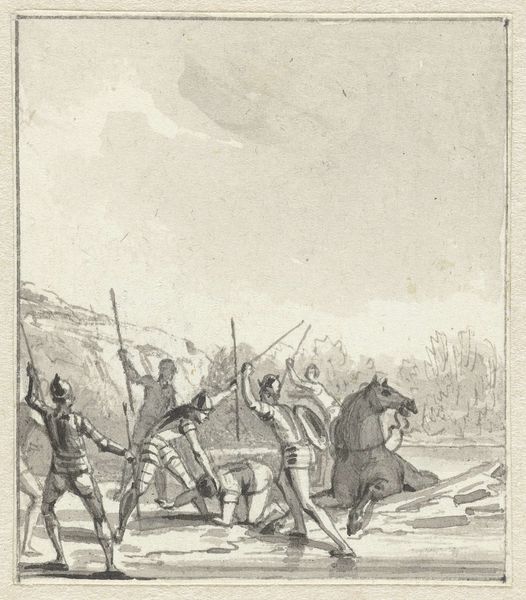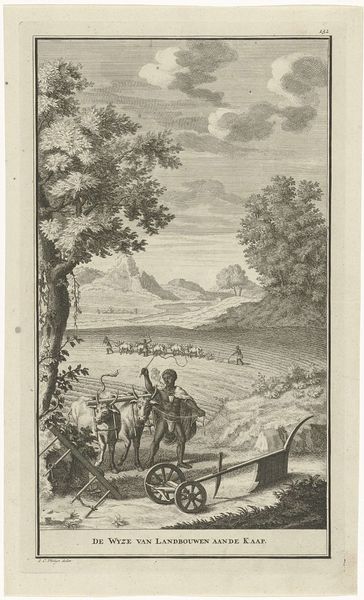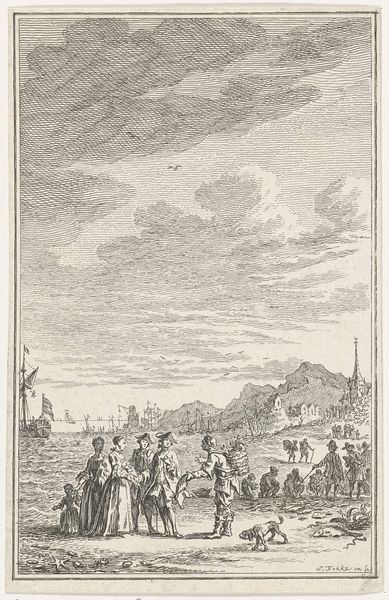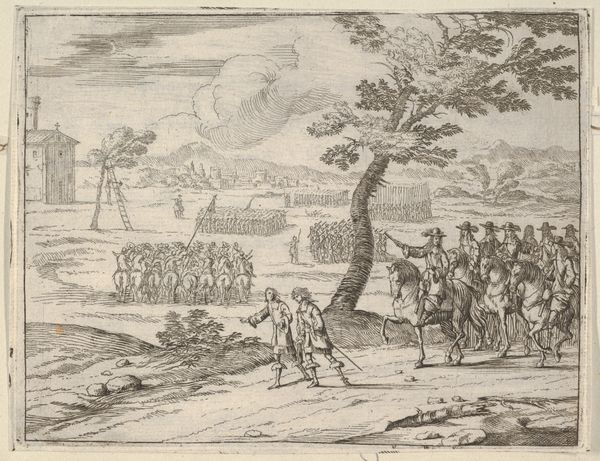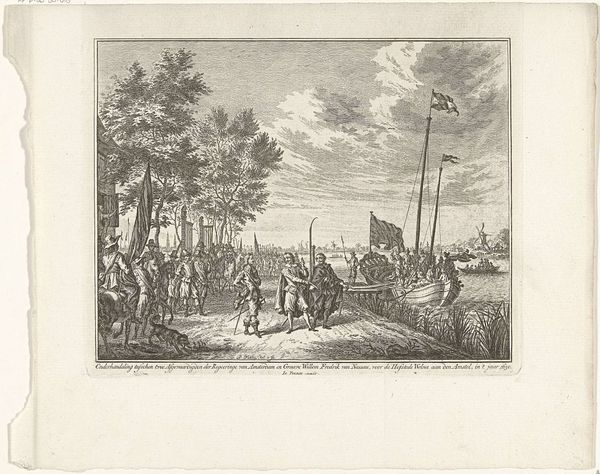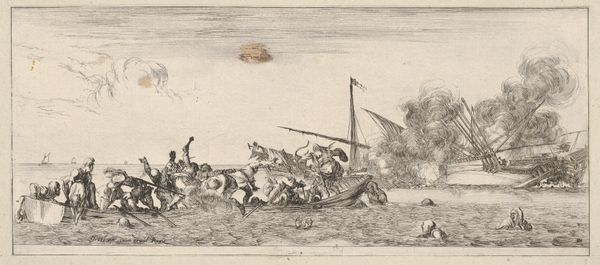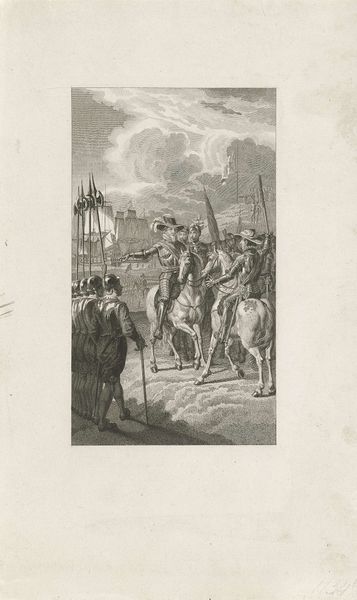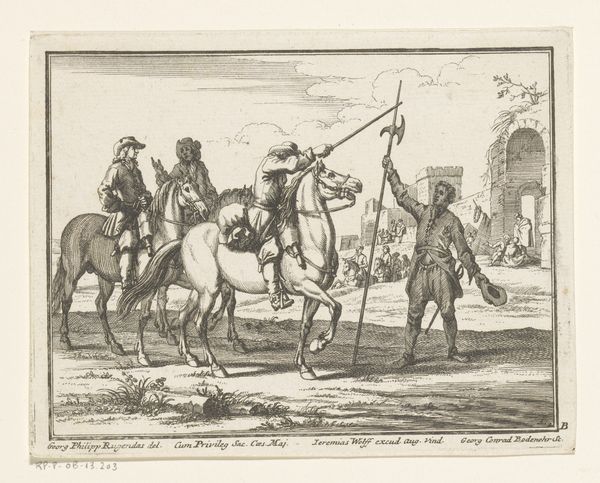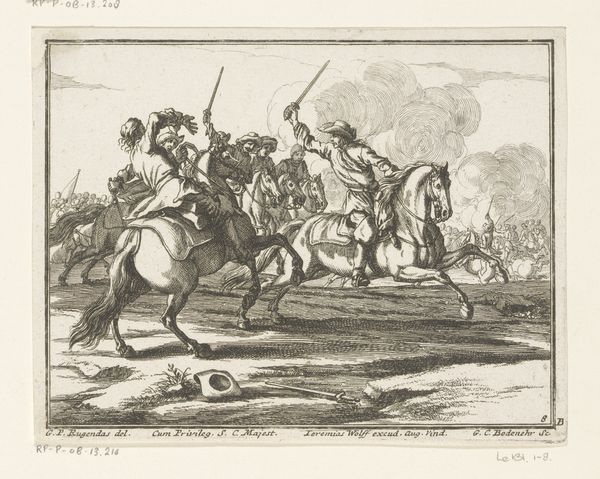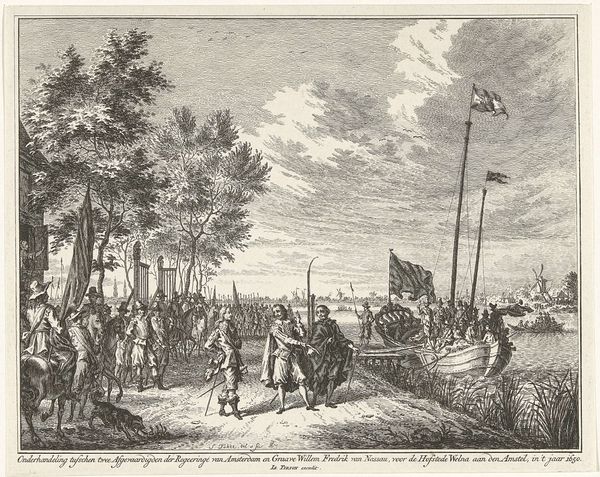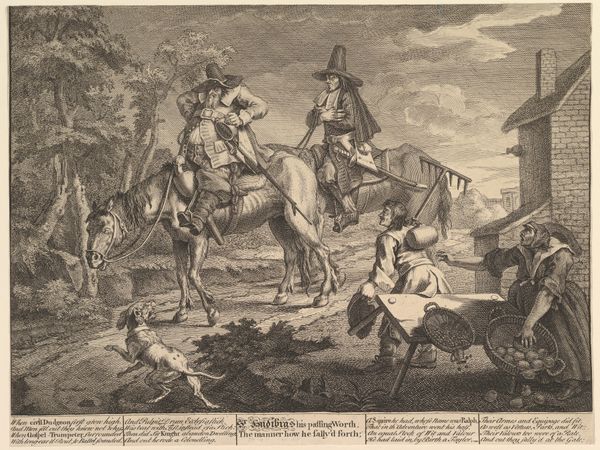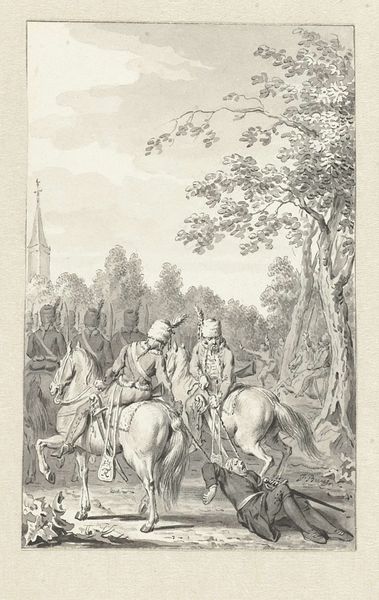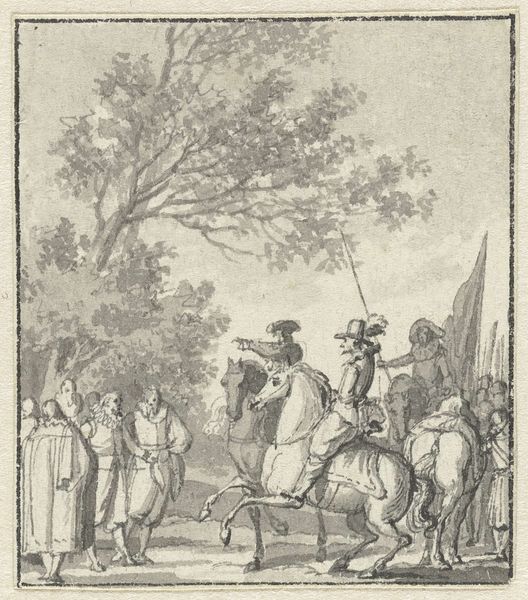
drawing, graphite
#
drawing
#
landscape
#
romanticism
#
graphite
#
genre-painting
#
history-painting
Dimensions: height 65 mm, width 55 mm
Copyright: Rijks Museum: Open Domain
Curator: Here we have a graphite drawing from the late 18th or early 19th century entitled 'In 't Jaar 1786 en 1787,' currently housed in the Rijksmuseum. The artist is, alas, anonymous. Editor: Wow, it's like a scene caught in a dream! All in graphite, pale and silvery, the figures almost float. Is it peaceful or is there a slight tension in the air? Curator: The artwork depicts a scene that's categorized as both genre painting and history painting, offering a glimpse into the political turmoil of the Netherlands during 1786 and 1787. The Patriot movement was clashing with the Orangists. Given this context, I think the slight tension is deliberate. Editor: Ah, a political snapshot! That makes sense, especially with the soldiers marching and the figures disembarking from the boat, with some celebrating as they get off. It feels like the calm before or after some civic upheaval. The stark lines and sparse use of shading is quite effective for conveying uncertainty. Curator: Indeed, this was a turbulent time of shifting alliances and revolutionary sentiment bubbling under the surface, not just in the Netherlands, but across Europe. It would be fascinating to discover who created this work and what their political leanings were! It does exemplify elements of Romanticism in its emotionality despite its rather detached and understated aesthetic. Editor: It's like the artist chose restraint, only whispering the turmoil instead of shouting it from the rooftops. I can almost smell the river and feel the cool breeze off the water. Such a beautiful little window into a pivotal time. What's particularly intriguing is how accessible history becomes through a simple drawing like this. I wonder if people at the time would understand the historical and cultural contexts, how the people, race, and identity are perceived during that era compared to contemporary audience, like us. Curator: Exactly! It bridges that gap and prompts important reflection. Works like this encourage us to dissect the accepted historical narratives, to contemplate the individual and collective experiences that defined the late 18th Century. It is such an insightful piece to reflect on sociopolitical perspectives in a specific timeline. Editor: This artwork serves as a stark reminder of history's complexity and how even the smallest, quietest voices can speak volumes across centuries. I will think about it the next time I visit this museum!
Comments
No comments
Be the first to comment and join the conversation on the ultimate creative platform.
